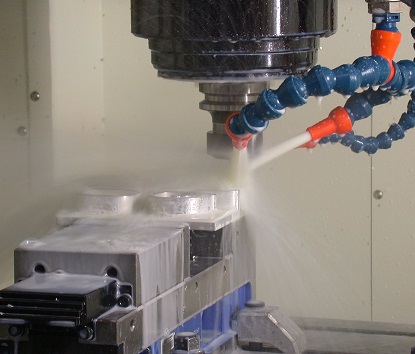Aluminum——Exposure Sources & Industrial Hygiene
Target organ(s): Dermis, lungs, nervous system
Occupational exposure limits: TWA: 5 mg Al/m3 from ACGIH (TLV) [United States] inhalation (pyro powders, welding fumes); TWA: 10 mg Al/m3 from ACGIH (TLV) [United States] inhalation (metal dust)
Reference values: RfD/RfC: N/A (USEPA); MRL: 1 mg
Al/kg/day (ATSDR)
Risk/safety phrases: Combustible dust
SOURCES OF EXPOSURE
Occupational
Occupational exposure to aluminum occurs during the refining of the primary metal and industries that use aluminum products, including the aircraft, automotive, and metalwork industries. Exposure to aluminum may also occur from aluminum welding (Nieboer et al., 1995).
In the aluminum refining process, exposure is primarily to aluminum hydroxides and aluminum oxides from the initial extraction and purification process. Aluminum oxide and aluminum fluoride exposure may occur in the potroom, an area that also produces tar-pitch volatiles such as PAHs, which are important confounding exposures when examining the potential health effects from exposure of aluminum (Drablos et al., 1992; IARC, 1984; Nieboer et al., 1995).
Most studies of occupational exposure to aluminum have dealt with inhalation of aluminum-containing dust particles, in combination with other dust constituents. Rarely is a worker exposed solely to aluminum-containing dust; exposure to mixtures of aluminum with fine respirable particles or other potentially toxic chemicals is more prevalent.
A great variety of industries employ workers potentially exposed to aluminum and aluminum compounds, including the plumbing, heating, and air conditioning industry; the masonry and stonework industry; electrical workers; machinists; metal and wire production; general medical and surgical hospitals; industrial building construction; and industries that use special dyes, tools, and fixtures (NIOSH, 1991).
Environmental
Aluminum is the most abundant metal in the earth’s crust and the third most abundant element making up about 8.8% by weight. It is found in most rocks in the formof aluminosilicate minerals (Lide, 2005; Staley and Haupin, 1992). Aluminum enters the environment naturally through the weathering of rocks and minerals, and through anthropogenic releases from air emissions, waste water effluents, and the solid waste generated from aluminum refinement and production. The aluminum released through natural weathering processes far exceeds the contribution of releases to air, water, and land associated with human activities (Lantzy and MacKenzie, 1979).
The use of alum (aluminum sulfate) as a flocculent in water treatment facilities is a potential source of aluminum in treated water (Letterman and Driscoll, 1988; Miller et al., 1984). However, the concentration of aluminum in surface and groundwater is modulated by the acidity of the water. Higher concentrations of aluminum are typically limited to water with a pH < 5; as a result, aluminum concentrations in most surface water are very low.
Chronic exposure to aluminum is found primarily in patients undergoing dialysis treatment with softened or untreated water. In a study by McDermott et al. (1978), 7 of 19 patients receiving dialysis treatment experienced dialysis- associated encephalopathy. In all seven patients, the aluminum concentration in the brain was significantly higher than in other patients who were uremic but not dialyzed.
Abreo et al. (1990) have demonstrated exposure to aluminum by means of inadequately treated domestic water sources containing high concentrations of the metal.
Another source of chronic exposure to aluminum is aluminum-containing phosphate binders. Randall (1983) reported a case of an 11-month-old girl who was not undergoing dialysis but who received aluminum-containing phosphate binders. The child subsequently died of a progressive encephalopathy, and increased levels of aluminum were found in the serum and cerebrospinal fluid. It is now well established that iatrogenic exposure to aluminum, such as through hemodialysis or administration of phosphate binders, may cause encephalopathy, bone disease, and anemia (Flaten et al., 1996).
INDUSTRIAL HYGIENE

Aluminum has been used in the industry for more than 100 years. Electrolytic reduction of aluminum was developed in 1886 by Hall and by Hdroult in France. Aluminum has many uses, either alone or alloyed with other compounds such as copper, magnesium, manganese, silicon, and zinc. These alloys are used in industries such as construction materials, communications, laboratory and diagnostic studies, paper, printing, glass, water purification, and textiles. Industrial health hazards are largely associated with electrolytic reduction of aluminum oxide, also known as alumina, aluminum trioxide, or bauxite. Health hazards may exist as a result of exposure to condensed pitch volatiles (tars), which are produced during the reduction process by burning the anode in the electrolytic cell (Gibbs, 1985). Gibbs conducted a cohort study on aluminum reduction plant workers between 1950 and 1977. The study found a slight increase in mortality from respiratory disease among some of the men occupationally exposed to tars during this time period. However, no adjustment was made for lifestyle factors, such as smoking or for other personal traits that might contribute to respiratory disease.
Many early reports describe inhalation of aluminum as a dust to be hazardous to workers. German literature from World War II describes the cases of workers who had inhaled aluminum and who subsequently exhibited Xray changes much like those seen with silicosis. The workers complained of dyspnea and the development of spontaneous pneumothorax.
These findings are compatible with those of Shaver and Riddell (1947), who described the first identified cases of what has since been called Shaver’s disease. This disease is characterized by dyspnea, coughing, substernal pain, weakness, and fatigue. X-ray films show bilateral lacelike shadowing, more frequently in the upper halves of the lungs and with increasing intensity toward the lung roots, and varying degrees of pneumothorax. Outstanding features at autopsy are advanced emphysema and interstitial pulmonary fibrosis. Currently, the National Institute of Occupational Safety and Health (NIOSH) classifies aluminum compounds as nuisance dusts and sets exposure limits at 10 mg/m3 total and respirable dusts, and 5 mg/m3 respirable dusts. The NIOSH also sets exposure limits for aluminum pyropowders and welding fumes at 5 mg/m3 and for soluble salts and alkyls at 2 mg/m3. Atomic absorption spectrometry can be used to monitor aluminum levels (NIOSH, 1994).
MEDICAL MANAGEMENT
Two important risk groups for aluminum toxicity exist for, which emergency management may be required: those with renal insufficiency and those with excessive and prolonged aluminum exposure, which produce clinical symptoms, including altered mental status, anemia, or osteoporosis. Treatment of aluminum toxicity includes elimination of aluminum from the diet, total parenteral nutrition, elimination of aluminum from dialysate, medications or antiperspirants, and elimination of any occupational exposure that may be present. An attempt at elimination and chelation of the element from the body’s stores may be prescribed depending on the severity of the exposure. Elimination by chelation is accomplished through the administration of deferoxamine. Patients with serum levels >20 mcg Al/dl may require chelation therapy though symptomatic patients with serum levels >50–60 mcg Al/dl generally indicate that chelation therapy is necessary. Deferoxamine therapy typically ranges from 2.5 to 5 mg/kg/wk (Kan et al., 2010). Chelation therapy is typically conducted in consultation with a nephrologist and a medical toxicologist.
REFERENCES
Strong, M.J., Garruto, R.M., Joshi, J.G., Mundy, W.R., and Shafer, T.J. (1996) Can the mechanisms of aluminum neurotoxicity be integrated into a unified scheme? J. Toxicol. Environ. Health 48:599–613.
USGS (2007) Aluminum. In: Mineral Commodity Summaries 2007, U.S. Geological Survey, pp. 18–19. Available at http://minerals .usgs.gov/minerals/pubs/mcs/2007/mcs2007.pdf.
Vittori, D., Nesse, A., Pérez, G., and Garbossa, G. (1999) Morphologic and functional alterations of erythroid cells induced by long-term ingestion of aluminum. J. Inorg. Biochem. 76:113–120.
Ward,M.K., Ellis,H.A.,Feest,T.G.,Parkinson, I.S.,Kerr,D.N.(1978) Osteomalacic dialysis osteodystrophy: evidence for a waterborne aetiological agent, probably aluminum. Lancet 1:841–845.


